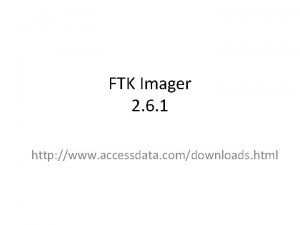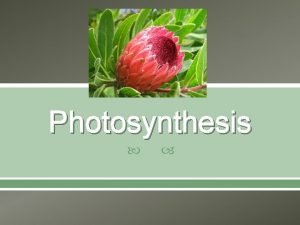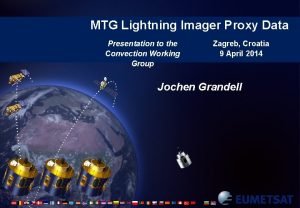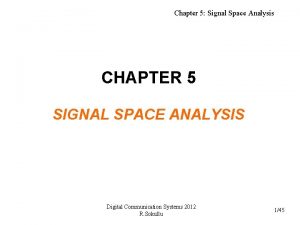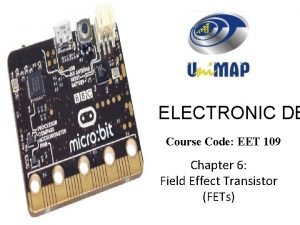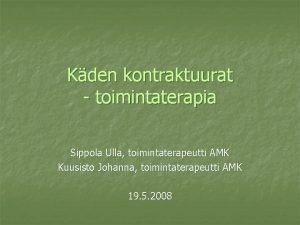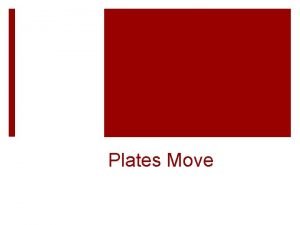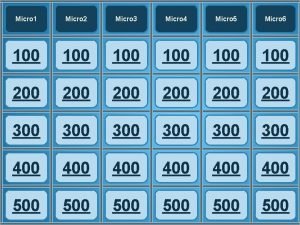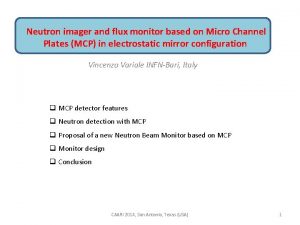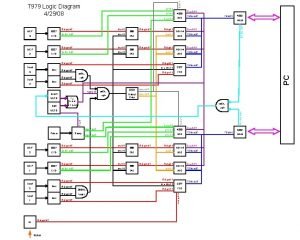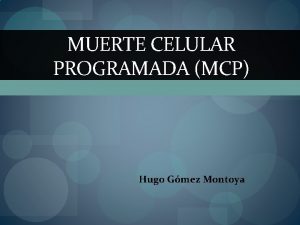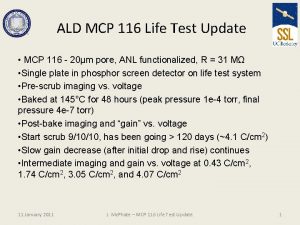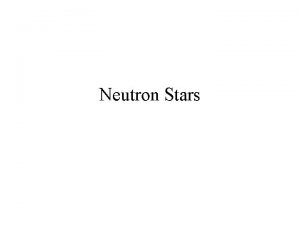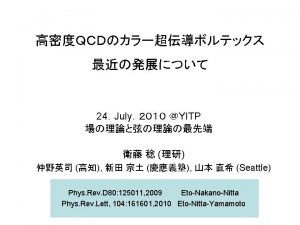Neutron imager with Micro Channel Plates MCP in











- Slides: 11

Neutron imager with Micro Channel Plates (MCP) in electrostatic mirror configuration: first experimental test V. Variale*, B. Skarbo 2 1 Istituto Nazionale Fisica Nucleare, INFN Sezione di Bari, Italy 2 Budcker Institute of Nuclear Physics, Novosibirsk, Russia * Vincenzo Variale. Tel. : +39 080 5442344; fax: +39 080 5443190. E-mail address: vincenzo. variale@ba. infn. it CAARI 2016, Fort Worth, Tx, USA

Abstract The idea of a new high transparency device based on Micro Channel Plate (MCP) has been recently presented for monitoring the flux and spatial profile of neutron beams. It consists of the assembly of a very thin aluminum (Al) foil with 6 Li deposit placed in the beam and a MCP equipped with a phosphor screen readout viewed by a CCD camera. A peculiar feature of this device is that it uses a 90° electrostatic mirror to minimizing the perturbation on the neutron beam, i. e. absorption and scattering. It can be used at existing time-of-flight facilities, in particular, at the n_TOF facility at CERN, for monitoring the flux and spatial profile of neutron beams in thermal and epithermal region. In this contribution the first experimental test carried out by using radioactive sources will be presented and the related results discussed. CAARI 2016, Fort Worth, Tx, USA

Introduction The MCP devices have many advantageous detection features as: fast time response (signal rise time about 300 ps); low dead time (for a diameter channel of 6 mm about 100 ns); high counting rate (more than 10 8 sec-1); low dark current (for a vacuum better than 10 -6 mb 1 Hz/cm 2); and a very high spatial resolution (6 mm per 1 -stage MCP and 25 mm per 2 -stage MCP, the chevron configuration) [1]. These features make the MCP very suitable to be used in beam profile monitor devices construction. The MCP radiation detection efficiency depends on the radiation type and energy. For the neutrons, however, they have a very low direct detection efficiency (up to 0. 6% for fast neutrons). For that reason it is necessary of using other than the MCP also a converter material to increase the neutron detection efficiency. In the last years, MCP devices have been largely employed both for detection of ionizing radiation and as image intensifier. It has also been demonstrated that MCPs can be applied in neutron detection and imaging with many advantages [2, 3, 4]. Recently the idea of a new high transparency device based on MCP for monitoring the flux and the spatial profile of a neutron beam has been proposed [5]. In that reference the device design details are shown and discussed, here, for sake of clarity, the device behavior scheme is shown in fig. 1 again. The device consisted of an Aluminum (Al) foil with a 6 Li deposit, placed in the beam, and a MCP assembled with a phosphor screen readout viewed by a CCD camera, placed outside the beam. The reaction 6 Li(n, a)t used as converter gives to the slow neutrons which hit the 6 Li atoms a great chance to produce a and t ions with 2 and 2. 7 Me. V of energy, respectively. At those energies the a and the t particles have, in the Aluminum foil, a range of 5 mm and 30 mm, respectively. Then, by taking an Al foil of which has a thickness of 14 mm, all the a particles are stopped and all the t transmitted. The tritons, then, exit from the Al foil and emit Secondary Electrons (SE) which are accelerated by the nearby grid and then reflected at 90°, towards the MCP, by the other grids tilted at 45° (electrostatic mirror). The SE impinging on the MCP inner channels generate an electron avalanche. Behind the MCP (in chevron configuration) there is the signal read-out system, a phosphor screen followed by a CCD camera where the beam image is recorded. In this paper the MCP based monitor test measurements carried out with radioactive sources are presented and discussed. CAARI 2016, Fort Worth, Tx, USA

Neutron beam monitor with Electrostatic Mirror (E. M. ) configuration - Scheme Notice: as converter material the 6 Li F deposited. on the Aluminum foil, has been used. In the figure , a 6 Li atom hit by a neutron which produces the reaction 6 Li(n, a)t is also shown. The Al foil used had a thickness of 14 mm and the 6 Li deposit , a thickness of 1. 6 mm. CAARI 2016, Fort Worth, Tx, USA

The experimental apparatus scheme The Neutron source : 252 Cf with A=3. 35 x 105 Bq The a source: 241 Am with A=3 k. Bq Vacuum chamber with inside the Electrostatic Mirror. Notice: the radioactive sources positions used for the test measurements. CAARI 2016, Fort Worth, Tx, USA

Test measurement results with Neutron source (N. S. ) the light points on the CCD camera represent the image of the neutron reactions happened in the converter in one second Signal without N. S. Background Signal with N. S. CCD camera snapshots of the light points representing the background radiation in a) (2 light points) and the nuclear reactions induced by the neutrons in the converter in b) (7 light points) CAARI 2016, Fort Worth, Tx, USA

Test measurement results with a Source CCD camera snapshots for the measurements with the a source. The light points on CCD camera represent the a hit Al foil Signal with Electrostatic Mirror off (background) Signal with electrostatic Mirror on In a) the CCD background signal, (4 light points with 2 light points less visible because of the figure size reduction) obtained when the electrostatic mirror was off (Vfoil=Vgrid= 0 V); in b) the CCD signal with electrostatic mirror on (Vfoil=Vgrid= -1 k. V), about 100 light points (also here some light points was less visible and have been lost in the figure reduction). CAARI 2016, Fort Worth, Tx, USA

Summary experimental results Test measurements with Neutron Source: r = 3. 4 ± 0. 02 s-1 (Back ground) without Neutron source : r = 1. 7 ± 0. 01 s-1 Test measurements with a Source and Vf=Vg= -1 k. V (E. M. on): r = 120 ± 6 s-1 Test measurements wit a Source and Vf=Vg= 0 V (E. M. off) : r = 2. 74 ± 0. 16 s-1 Notice, it corresponds to a Back ground signal in the presence of the a Source CAARI 2016, Fort Worth, Tx, USA

Possible CORONA effect In order to optimize the values of the applied potentials, further test measurements with higher voltages on foil converter and reflecting grids have been carried out. The results of those measurements have shown that when the voltage was bigger than -1. 5 k. V an increase of the light points on the CCD camera signal was observed Notice: the vacuum chamber pressure measured during all the experimental tests was in the range 3 ÷ 5 x 10 -7 mb. No Corona Effect was expected with a such low pressure but, unfortunately, the grid cards are made by glass fiber composite material RF 4 not suitable for high vacuum. Atoms desorbed from grid surfaces could have been ionized by the high electric fields present close to the grid wires. CAARI 2016, Fort Worth, Tx, USA

Test on Neutron Beam For the test on the neutron beam at n_TOF facility of CERN, some modification on the Electrostatic Mirror support was needed: a) Notice no hindrances on the beam axis b) Beam monitor assembled on only one flange: a) the modified support system on the new larger flange which host also the MCP assembly; b) the new flange closed on the new vacuum chamber and on it the CCD camera is installed. CAARI 2016, Fort Worth, Tx, USA

Conclusion Before to test the proposed high transparency neutron beam monitor directly on the neutron beam of n_TOF CERN facility, an experimental test on his behavior has been carried out in our laboratory by using radiation sources. The experimental tests have shown that the electrostatic mirror used to convey the neutron image, obtained by the Secondary Electrons, toward the MCP assembly placed off beam axis worked well. Possible corona effects could be observed on CCD camera display when the deflecting grid voltage was higher than -1. 5 k. V. The same effect at a A lower level it is visible when the converter foil voltage was higher than -2 k. V. • References [1] J. L. Wiza, Nucl. Instr. And Meth. 162 (1979) 587. [2] G. W. Fraser and J. F. Pearson, , Nucl. Instr. And Meth. A 293 (1990) 569. [3] O. H. W. Siegmund, A. S. Tremsin, J. V. Vallerga, J. Hull, IEEE Trans. Nucl. Sci. NS-48 (2001) 430. [4] A. S. Tremsin, W. B. Feller, R. G. Downing, , Nucl. Instr. And Meth. A 539 (2005) 278. [5] V. Variale, Physics Procedia 66 (2015) 242 -248 [6] MCNPX report manual CAARI 2016, Fort Worth, Tx, USA


